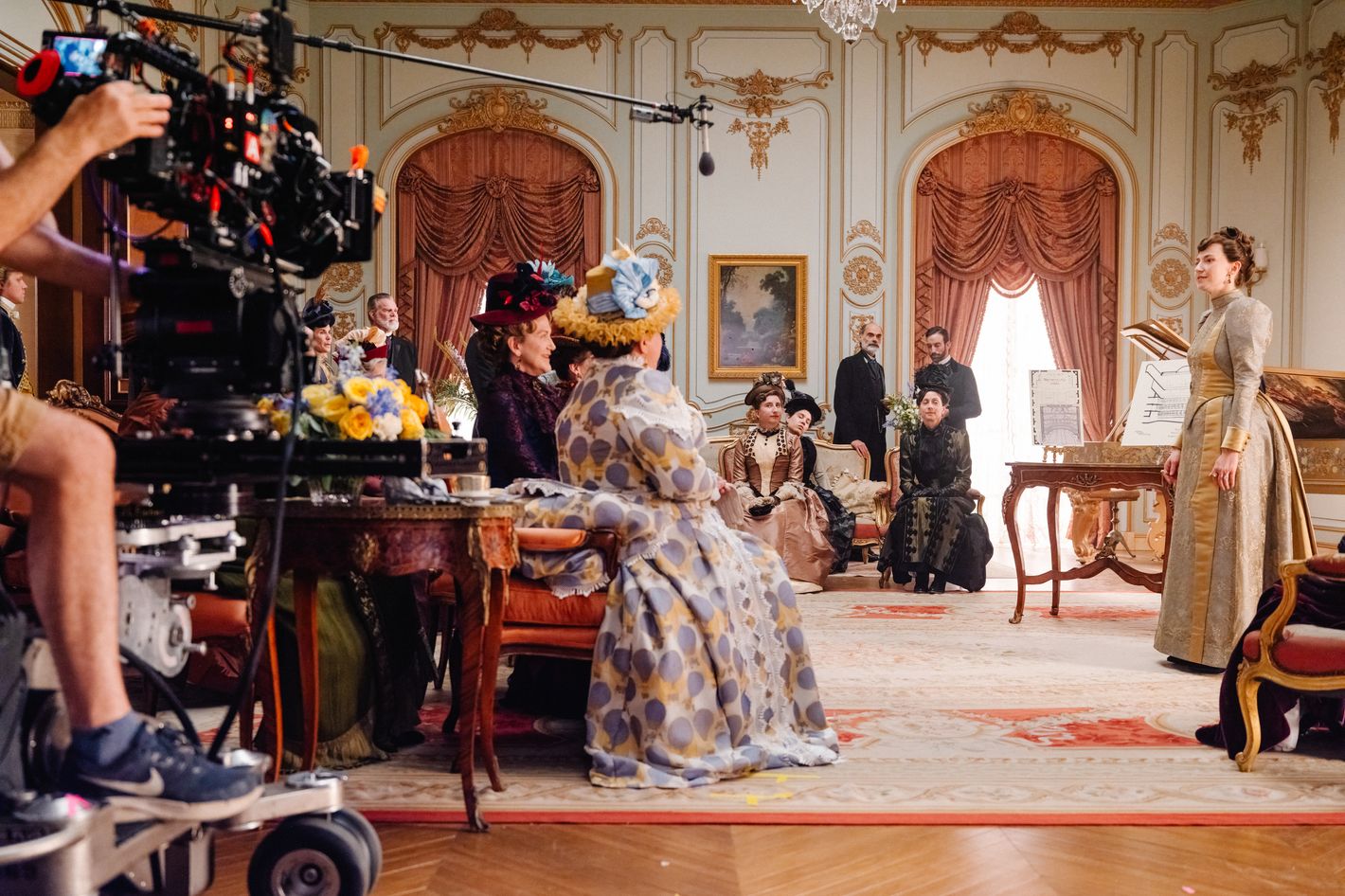
On a gray soundstage in Maspeth on a Friday evening in October, Cynthia Nixon and Christine Baranski are working out how to play what, for the HBO period drama The Gilded Age, amounts to an astonishing shift in power between siblings. Baranski’s Agnes van Rhijn has usually been the dictator of their prominent family. But at the end of last season, her ne’er-do-well son, Oscar (Blake Ritson), lost her fortune in a scam, while Nixon’s do-gooder, Ada, received a surprise windfall, inheriting money from a now-dead husband, played by Robert Sean Leonard. “Before the season filmed, we had great fun imagining what she would do with the house,” Nixon tells me. “Would she turn the elegant brick home into a soup kitchen?”
As it turns out, her character has taken on various charitable causes, including temperance. In the scene they’re filming, Ada has decided to try to get her servants to sign a pledge to give up drinking, much to Agnes’s dismay. Baranski repeats a joke about a Brit’s loyalty to “the queen and the bottle, not necessarily in that order,” to herself like she’s a pianist rehearsing an étude. Meanwhile, the crew — including one PA wearing a T-shirt emblazoned with photos of Baranski in the style of a metal band — coos over the dog on hand to play Ada’s beloved Cavalier King Charles spaniel. (Asked what it’s like to work with the dog, Baranski channels Agnes and answers, “No comment.”)
These are the typical stakes of a Gilded Age story line, where the micro is as important as the macro. Much of the first season hung on attempts by Bertha Russell (Carrie Coon) to get the stuffy elite to her daughter Gladys’s (Taissa Farmiga) ball. Other crucial plot developments have involved the reveal that a French chef wasn’t actually French, a plucky servant’s attempts to patent an alarm clock, and Agnes’s dramatic decision to cross the street in order to speak to the Russells in person. New York critic Kathryn VanArendonk hypothesized in 2023 that, in The Gilded Age, “things that should be enormous do not actually matter all that much (a massive labor movement; getting married late in life and then being widowed immediately; racial segregation; the invention of electricity; financial ruin). Things that do not matter at all are treated like earthshaking cataclysms.” But the compelling thing is how the show, by turns, invites the audience in on the joke of its extreme focus on minutiae and then, at other times, plays the grand drama of improperly made soup entirely straight. It’s comfort viewing that’s also, maybe, a winking commentary on those comforts, depending on whom you ask. “The gestures of grandiosity we’re aware of as we’re making them,” Michael Engler, one of the show’s directors and executive producers, tells me, insisting that members of the production team knew those shots of Agnes crossing the street in season one were “iconic to this show” as they filmed them and of a different sensibility than you’d see in creator Julian Fellowes’s previous series, Downton Abbey. He says they expect the audience “understands that, Oh, this is a little over the top, in a way they find pleasurable to watch and hopefully not too campy.”
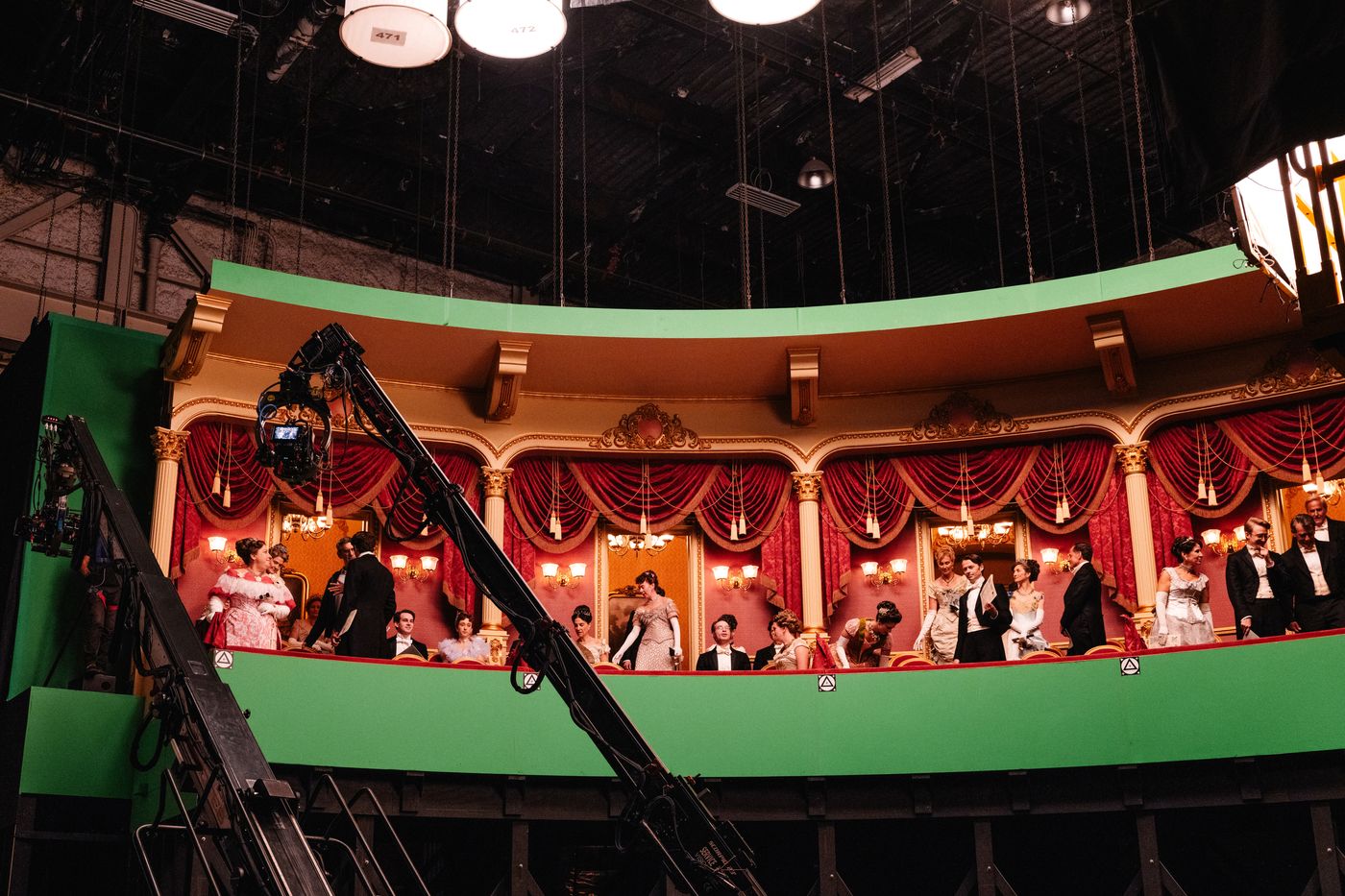
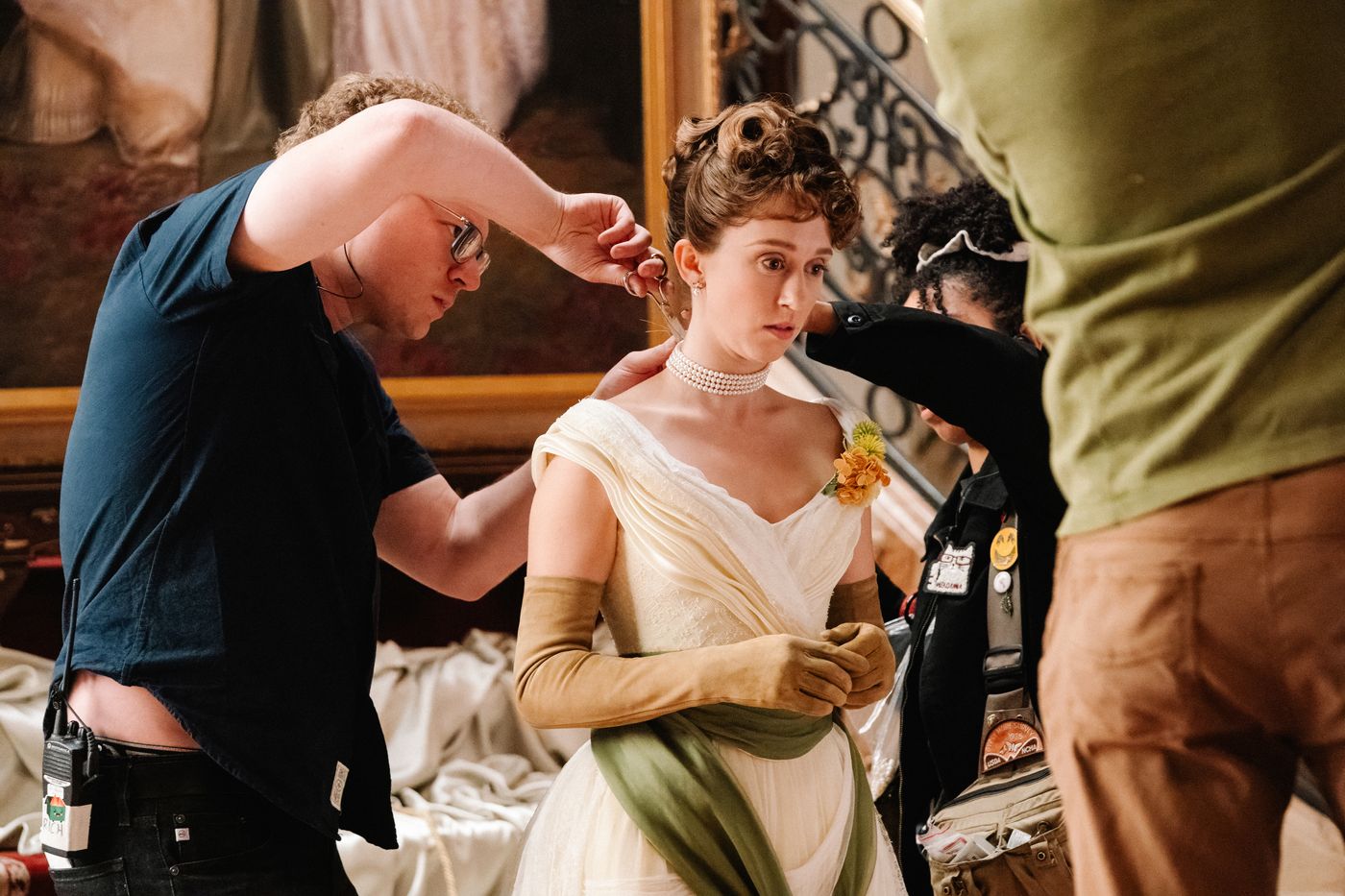
The series does take historical accuracy quite seriously — it has touched on union strikes, the construction of the Brooklyn Bridge, and battles over the most important opera company in New York City. Erica Armstrong Dunbar, a professor of African American studies at Emory and the show’s resident historian, finds inspiration in reading newspapers of the era, especially the gossip columns (this season deals with the then-newfangled social rules of divorce). “My fantasy is always that the audience runs and looks things up on Wikipedia and then reads books about it,” says Fellowes. Table manners are likewise treated with utmost importance. Coon always advises guest stars to hold their glasses by the stem so that they don’t have to redo any takes. Nixon, who filmed this season simultaneously with And Just Like That …, tells me her Gilded Age etiquette became so ingrained she found herself picking up a glass of coffee by its saucer when filming the Sex and the City sequel. (“I was like, That’s insane,” she says. “Miranda would never do that.”)
The Gilded Age films at a rapid pace, often in many locations at once. The show has constructed a replica of an Upper East Side street, as well as standing sets at separate soundstages for the van Rhijn and Russell households, on Long Island and also on location in Newport. Over the past few years, in spring and fall, when the beach and sailing crowds aren’t overwhelming, The Gilded Age heads there to use historic houses with the enthusiastic support of Rhode Island’s film commission and the local preservation society.
As executive producer David Crockett explains to me, the show cobbles together its own estates from the available locations. For instance, The Gilded Age uses the kitchen of the Elms, originally built for coal magnate Edward Julius Berwind, as the New York kitchen of the Russell family, but then uses a room in Marble House, built for Alva Vanderbilt, as patriarch George Russell’s (Morgan Spector) bedroom. The logistics involved are intricate, and the show’s directors must be careful to frame shots so as not to reveal that a hallway belonging to one character might lead to a dining room owned by another — and to make sure that none of the modern protective flooring or handrails make it into a take. The production has, at this point, used nearly every available location to the fullest and is always on the hunt for access to another historic home within an acceptable filming distance. “We’re running out of mansions,” the production designer Bob Shaw tells me. “They had a lot of parties and a lot of balls, and it’s like, Well, how’s this one going to be different from the other? ”
Dunbar’s research has informed new perspectives on Newport for the show to explore in the coming season, too. Dunbar, the actress Denée Benton (who plays Peggy Scott, the main Black character on the show), and writer and executive producer Sonja Warfield have pushed to expand Peggy’s role. Peggy has, in the previous seasons, sought independence from her wealthy Brooklyn parents, played by Audra McDonald and John Douglas Thompson, though her story lines have tended to be some of the show’s more didactic — in one, she travels to the South to report on the Tuskegee Institute. This season, the show brings her and her family to Newport, where there was a sizable Black elite population. McDonald’s character, as it turns out, looks nouveau riche to a new character, the reigning doyenne of Black Newport society, played by Phylicia Rashad, who delivers tart Fellowes zingers of her own. (Although Benton did film in Newport, McDonald’s scenes were done in New York, where she had to rehearse Gypsy.) “It felt like another blossoming of the work that Dr. Dunbar and I were able to do with Julian and HBO before the production for season one to widen the lens on the Black stories within the gilded age,” Benton says. She was especially excited to see Peggy, who has “been through it,” experience some softness, wear a gorgeous gown, and attend a dance of her own. “It’s always been a dream to have a Black ball at the level of the balls we see at the Russell house.”
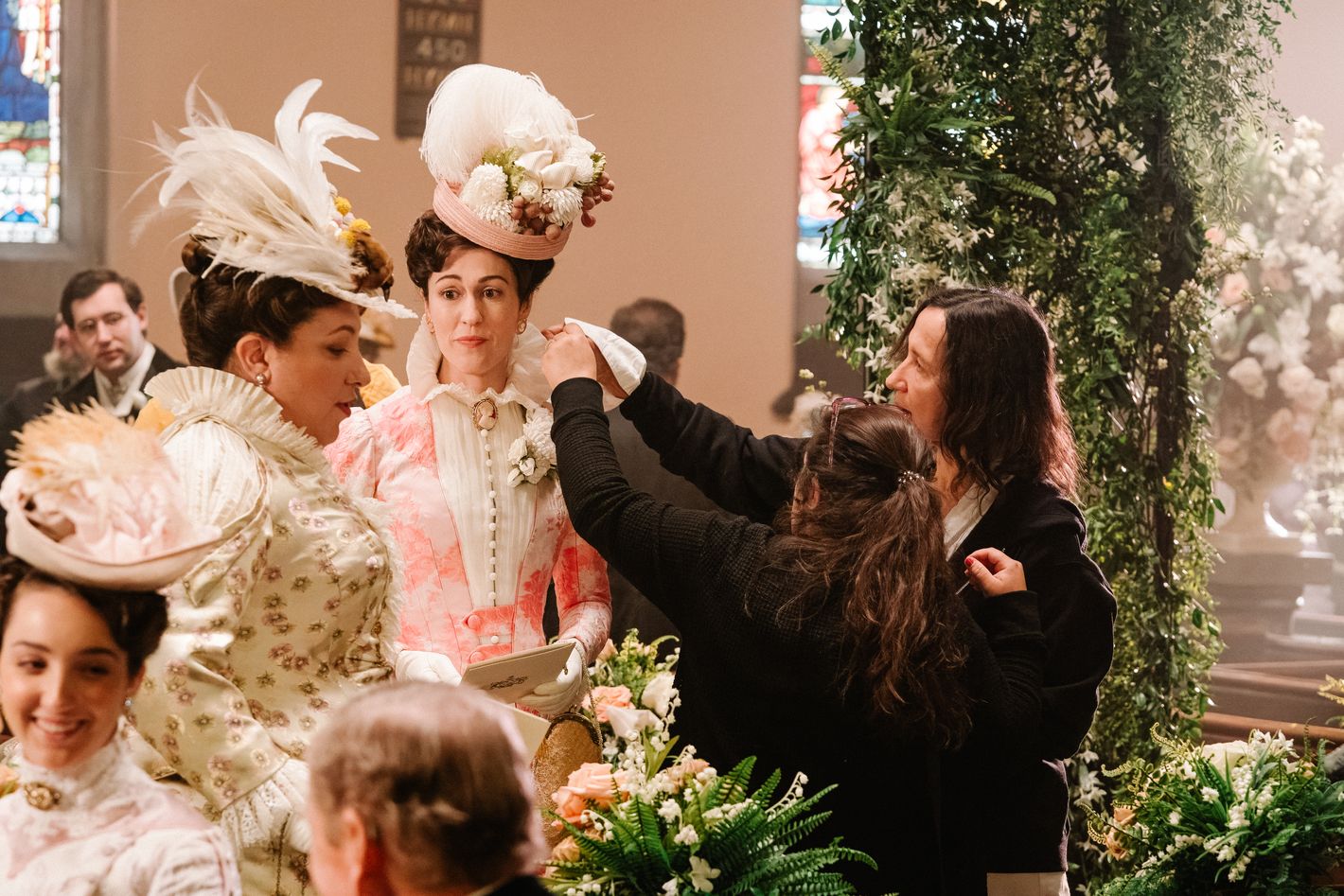
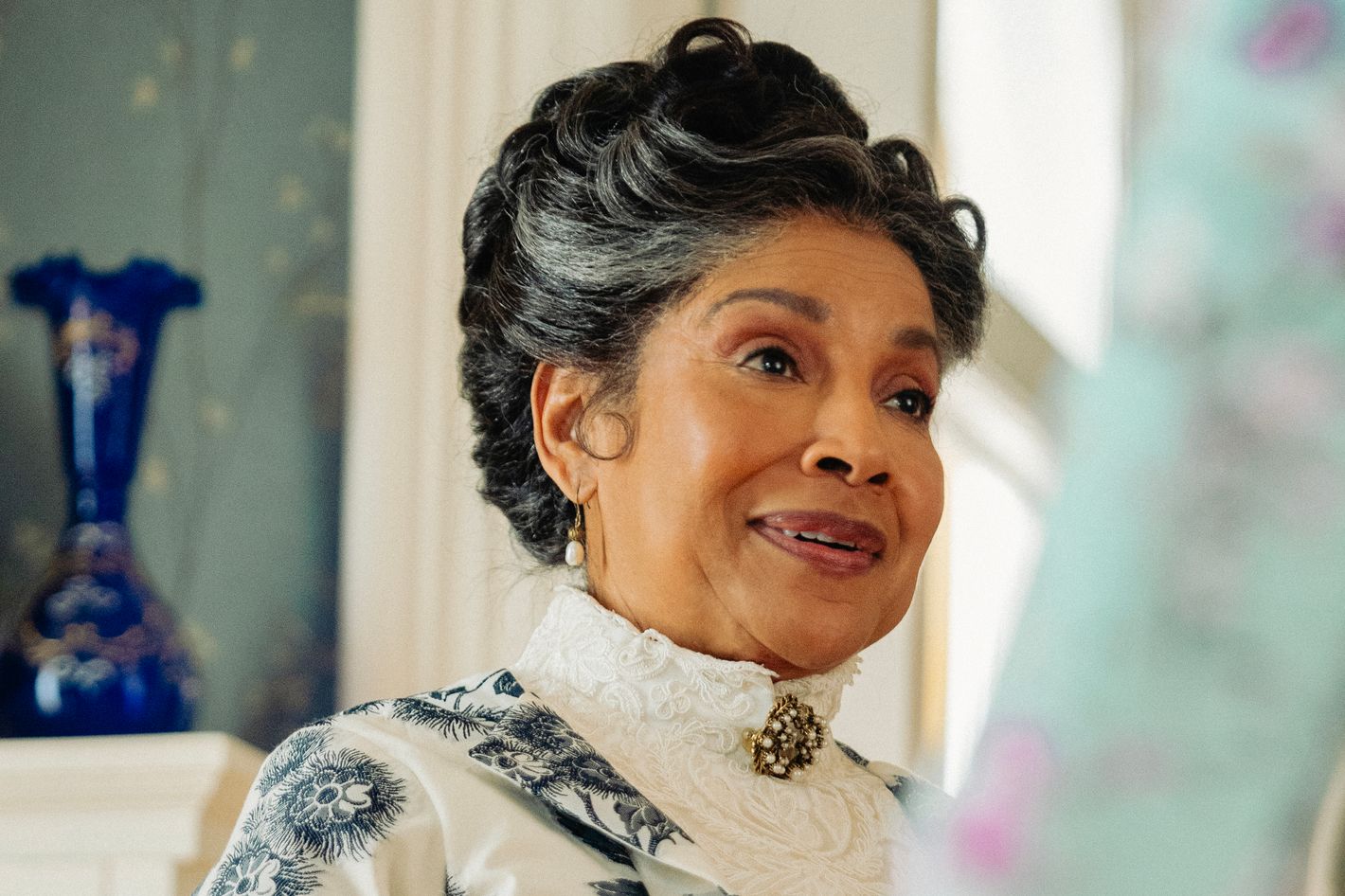
That same Friday evening at the Russell soundstage, located in another corner of industrial Long Island, things are grander than ever. The actors in the Russell family preside over airplane-hangar-size re-creations of ballrooms filled with immense staircases. The vibe is imperial. In the same building, a cakelike slice of an opera house floats above everything, framed with a green border for ease of CGI. The old-money van Rhijn’s abode is downright homely by comparison.
The actors with different story lines don’t often interact with one another. Taissa Farmiga, who plays the Russells’ daughter Gladys, hadn’t met Benton until the two did a photo shoot together earlier this year. She jokes that she’s become too accustomed to her own character’s golden digs. When she briefly crossed Long Island for a scene at the van Rhijns’, “I was like, Damn, they got the short end of the stick.”
While the drama in the van Rhijn household centers on Ada’s rise to power, in the Russell household, this season’s conflict concerns Gladys’s marriage prospects. Before the production wraps for the weekend, Coon and Spector are cranking out takes of an argument. Coon plays her character with the ferocity of a cavalry charge, a woman descended from potato farmers punching a hole for her family in polite society no matter the cost. At the end of the last season, after getting the New York elite to bend the knee and support her preferred opera company, Bertha set her sights on fixing up her daughter with an unpalatable British duke for the sake of his title. In this scene, Bertha wears one of her statement dresses — according to the show’s costume designer, Kasia Walicka Maimone, it takes about six weeks to make each one — and asks probing questions of her husband, who sips whiskey and smolders in response. The take involves a hunk of exposition, which they handle with a good sense of humor. Improvising dialogue for silent shots of their characters in action, they mutter: “There must be something to be done about this, surely.” “Not for me, surely.” “Who’s Shirley?” A fight between the two is atypical, given that the Russells have had, in previous seasons, a remarkably modern and supportive dynamic. “Part of the joy for both of us has been playing a marriage that works,” Spector tells me. “Moving into a place where we’re in conflict for the majority of the season, it’s not fun.”
Coon and Spector are also bracing for the fan response. Though the characters are stone-cold capitalists, the power couple are fan favorites — people have designed RAILROAD DADDY T-shirts in honor of George. Spector identifies as a socialist. “A lot of socialists advocate reading the Financial Times and Bloomberg News so that you can understand how the actual world of capital functions, and I’ve taken that advice,” he says. “Watching this show and thinking about these people is useful for the same reason.” Coon and Spector are among the actors who’ve engaged the most with the show’s online fandom. Coon has shared unglamorous behind-the-scenes photos, like one of herself eating pizza in a corset, on social media. On a red carpet in February, she thanked “the gays” for netting the series a third-season renewal. “I see everything,” Coon tells me with Bertha-like intensity. “I guess I would call it exposure therapy.”
In late October, the show’s presence in Newport is undeniable. In one mansion, I pass two crew members looking at what appears to be an antique mirror, asking each other, “Is this ours or theirs?” On a run along the Atlantic-facing Cliff Walk in front of those homes — Coon recommends it for exercise — I can see background actors in maid uniforms exiting buses on the way to the shoot. Coon tells me she decided to go on a Gilded Age–themed tour in Newport for fun while they were in production, assuming she’d be incognito in a baseball cap: “And one young man recognized me and then he took me on a tour because he knew all about the house!”
More Set Visits
How The Gilded Age makes absurdly low-stakes period drama into must-watch television.

































































